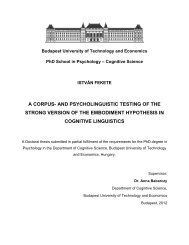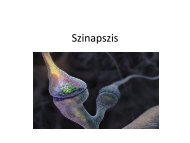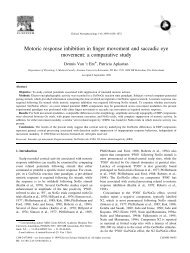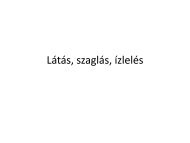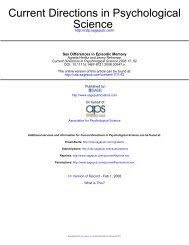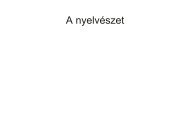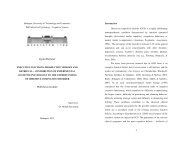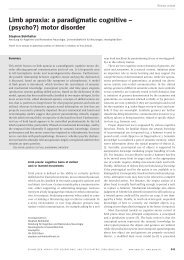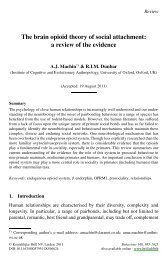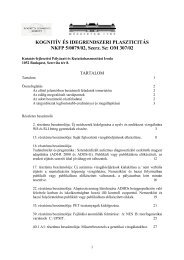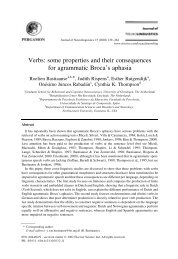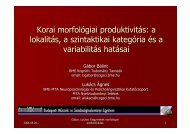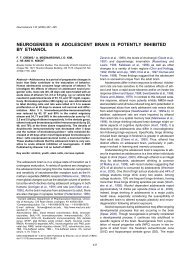Gyula Demeter
Gyula Demeter
Gyula Demeter
Create successful ePaper yourself
Turn your PDF publications into a flip-book with our unique Google optimized e-Paper software.
according to recent studies could be mediated by the phasic activation of locus coeruleus (LC)<br />
(Bouret & Sara, 2005; Aston-Jones & Cohen, 2005). We know that in OCD beside the<br />
serotonerg and dopamninerg systems (e.g., Denys, Van Der Wee, Van Megan, & Westenberg,<br />
2003; McDougle et al., 1990) the noradrenerg system is also affected (e.g., Brambilla, Barale,<br />
Caverzasi & Soares, 1997). It is presumed that the transmission of noradrenalin is increased<br />
from the LC to the frontal cortex, thalamus, hypothalamus and limbic system compared to<br />
normal subjects (Hollander et al., 1991; Brambilla et al., 1997).<br />
There is evidence also supporting the hypo- (e.g., Chamberlain et al., 2008) respective<br />
hyperactivity of the OFC (e.g. Rauch et al., 2007) and the hyperactivity of the anterior<br />
cingular cortex (e.g. Maltby et al., 2005). These structures play important roles in evaluating<br />
reward and costs and there is a growing amount of evidence that LC receives its most<br />
prominent descending cortical projections from these frontal structures determining its<br />
working mode (Aston-Jones & Cohen, 2005).<br />
It can be argued that this neurobiological setting might contribute in OCD to the<br />
overactivity of intentions and to the deficit at the cancellation component in the PM system,<br />
determining the impaired performance in event-based PM tasks. There are a lot of open<br />
questions and further studies are needed to clarify these hypotheses.<br />
38



